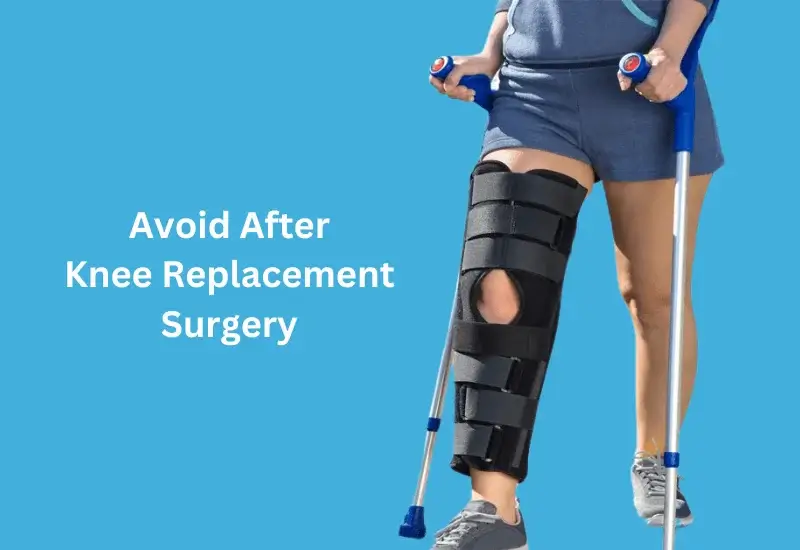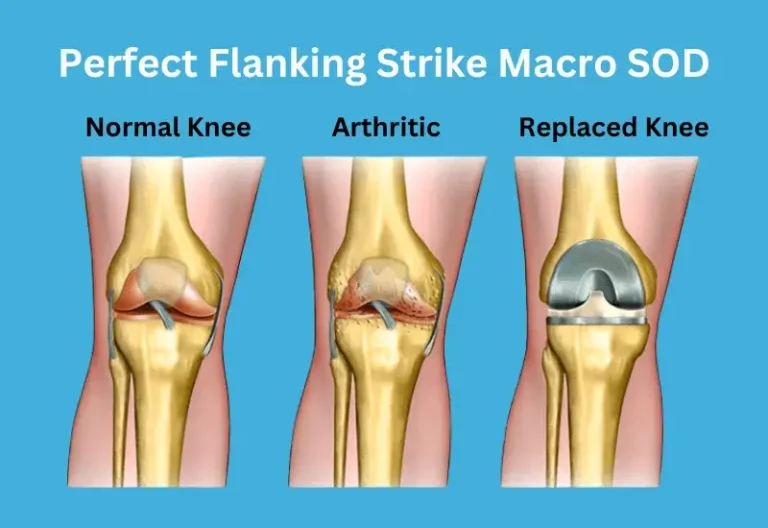Top 21 Mistakes to Avoid After Knee Replacement Surgery
Knee replacement surgery can drastically improve mobility and quality of life, but a successful recovery depends largely on post-surgery care and habits. Avoiding common mistakes during recovery can help ensure optimal healing and long-term success. Here are the top 21 mistakes to avoid after knee replacement surgery:
1. Not Following the Physical Therapy Program
One of the biggest mistakes patients make after knee replacement surgery is not adhering to their prescribed physical therapy (PT) program. Physical therapy is crucial for rebuilding strength, improving flexibility, and regaining full range of motion in the knee. Missing therapy sessions or not doing the recommended exercises at home can slow down recovery and may lead to stiffness or a limited range of movement.
Solution: Stick to your PT schedule, attend all sessions, and diligently perform home exercises as instructed by your therapist.
2. Overdoing Physical Activity Too Soon
While it’s important to stay active during recovery, doing too much too soon can harm your knee and delay healing. High-impact activities, heavy lifting, or excessive walking right after surgery can strain the knee joint and increase the risk of complications such as swelling, pain, or even damage to the new joint.
Solution: Gradually increase activity levels according to your doctor’s and physical therapist’s guidelines. Avoid activities like running, jumping, or heavy lifting during the initial recovery phase.
3. Neglecting to Manage Pain Properly
Pain management after a knee replacement is essential for a smooth recovery. Some patients either overuse pain medications or, conversely, avoid them due to fear of addiction or side effects. Both approaches can hinder recovery. Proper pain control helps you move more easily during physical therapy and reduces discomfort during daily activities.
Solution: Follow your doctor’s pain management plan closely, using prescribed medications as needed. Communicate with your doctor if your pain is not well-controlled, so adjustments can be made.
4. Skipping Follow-Up Appointments
Skipping or postponing follow-up appointments with your orthopedic surgeon is another common mistake. These checkups are crucial for monitoring the healing process, detecting potential complications, and ensuring that the artificial knee is functioning properly.
Solution: Attend all scheduled follow-up appointments. Your doctor will evaluate your progress and provide guidance on when you can safely increase activity levels or return to specific activities.
5. Not Taking Proper Care of the Incision Site
Failing to take proper care of the incision site can lead to infection, one of the most serious complications after knee replacement surgery. Infections can prolong recovery, require additional surgery, or even result in long-term issues with the artificial joint.
Solution: Follow your surgeon’s instructions for keeping the incision clean and dry. Avoid soaking in baths or pools until the wound has completely healed, and report any signs of infection, such as redness, warmth, or unusual drainage, to your doctor immediately.
6. Neglecting Proper Medication
Another mistake after knee replacement surgery is neglecting to take medications as prescribed. Pain medications, antibiotics, and blood thinners are often crucial for a smooth recovery. Skipping or altering doses can lead to unmanaged pain, increased risk of infection, or dangerous blood clots.
Solution: Stick to the medication plan provided by your doctor, taking your medications on time and in the correct doses. Communicate with your healthcare team if you experience side effects or issues with your medication.
7. Neglecting Post-Surgery Side Effects
Some patients overlook post-surgery side effects like swelling, pain, or temporary immobility, assuming these issues will resolve on their own. While some discomfort is expected, persistent or severe symptoms can signal complications.
Solution: Stay aware of your body’s signals. If swelling or pain seems excessive, or if you experience other unusual symptoms like fever or redness around the incision, contact your doctor immediately.
8. Exercises to Avoid After Knee Replacement
Many patients overestimate their recovery speed and engage in high-impact activities too soon, such as running, jumping, or lifting heavy objects. These actions can place undue stress on the new joint, delaying recovery or even damaging the implant.
Solution: Avoid high-impact activities and exercises that could harm your knee during recovery. Stick to low-impact exercises like walking, swimming, and cycling until your doctor or physical therapist gives you clearance for more strenuous activities.
9. Improper Nutrition and Hydration
Proper nutrition and hydration are key to healing after surgery. Neglecting to maintain a balanced diet rich in protein, vitamins, and minerals can impede wound healing, slow recovery, and increase the risk of infection.
Solution: Focus on a healthy diet that includes lean proteins, fruits, vegetables, and whole grains. Drink plenty of water to stay hydrated and avoid excessive amounts of caffeine or alcohol, which can dehydrate you.
10. Not Doing Enough Before Surgery
Patients often overlook the importance of preoperative preparation. Strengthening the muscles around the knee before surgery can help with post-operative recovery and overall outcomes.
Solution: Before surgery, engage in low-impact exercises to strengthen your leg muscles. Follow any pre-surgery guidelines provided by your doctor, including dietary changes or medications, to optimize your condition for the procedure.
11. Embracing a Sedentary Lifestyle
Remaining inactive after knee replacement surgery is a mistake that can lead to stiffness, muscle atrophy, and delayed recovery. While rest is important, avoiding movement altogether can prolong recovery and make physical therapy more difficult.
Solution: Stay active within the limits set by your healthcare provider. Gentle exercises like walking or stretching can prevent stiffness and keep your muscles strong during recovery.
12. Failing to Follow Up
Post-surgery follow-up appointments are critical for monitoring the success of your knee replacement. Some patients skip these checkups, risking complications that could have been caught early.
Solution: Attend all follow-up appointments as scheduled. Your doctor will evaluate the healing process and make any necessary adjustments to your recovery plan.
13. Going It Alone
Recovery from knee replacement surgery is often a long process that requires support. Many patients make the mistake of not seeking help from friends, family, or professional caregivers.
Solution: Don’t hesitate to ask for help, especially during the first few weeks after surgery. Having someone assist with daily activities, transportation, and emotional support can significantly ease the recovery process.
14. Ignoring Signs of Complications
Warning signs of complications, such as persistent pain, swelling, or fever, should never be ignored. These could be symptoms of infection, blood clots, or other serious issues that need immediate medical attention.
Solution: Stay vigilant and report any unusual symptoms to your healthcare provider as soon as possible. Early detection and treatment of complications can prevent more serious problems down the line.
15. Implant Issues
Although rare, issues with the knee implant can arise if the artificial joint shifts or becomes unstable. Patients may notice instability or clicking sounds in the knee, which could indicate a problem.
Solution: If you experience any unusual sensations or discomfort related to the implant, contact your surgeon immediately. Regular follow-ups can help identify implant issues early.
16. Neglecting a Healthy Diet
Proper nutrition is essential during the healing process. A poor diet can slow recovery and contribute to complications such as poor wound healing or reduced energy levels.
Solution: Stick to a nutrient-rich diet with plenty of protein, vitamins, and minerals to support tissue repair and overall healing. Limit processed foods and prioritize whole foods like vegetables, fruits, and lean meats.
17. Neglecting Pain Management
Managing pain is a key part of the recovery process. Some patients may stop taking pain medications prematurely or avoid them altogether out of fear of dependency.
Solution: Work with your doctor to create a pain management plan that addresses your needs without putting you at risk for addiction. Use non-narcotic pain relief options like ice packs, rest, and elevation whenever possible.
18. Not Using Assistive Devices
Some patients are eager to walk independently after surgery and may skip using assistive devices like walkers, crutches, or canes. This can lead to falls or strain on the knee, slowing down recovery.
Solution: Use assistive devices as recommended by your doctor or physical therapist. These tools are essential in the early stages of recovery and will help you regain mobility safely.
19. Poor Post-Operative Pain Control
Inadequate pain control after surgery can delay recovery and make physical therapy difficult. Some patients may be hesitant to take pain medications or may not manage their pain effectively.
Solution: Communicate openly with your healthcare provider about your pain levels. They can adjust your pain management plan to ensure you’re comfortable enough to engage in physical therapy and daily activities.
20. Stiffness
Stiffness is a common problem after knee replacement surgery, particularly if patients fail to move the knee regularly or engage in physical therapy. Stiffness can limit range of motion and make everyday tasks difficult.
Solution: Regularly perform the stretching and strengthening exercises prescribed by your physical therapist to keep the knee joint flexible. Use ice and elevation to reduce inflammation and maintain mobility.
21. Straying From the Pain Relief Plan
Inconsistent use of pain relief methods—whether medications or alternative therapies like ice or compression—can make recovery more challenging. Sticking to your pain relief plan is key to avoiding unnecessary discomfort.
Solution: Follow your pain relief plan as directed, using a combination of medications, rest, ice, and elevation to keep discomfort under control and promote healing.
Final Thoughts
Avoiding these top 21 mistakes after knee replacement surgery can help ensure a smooth and successful recovery. By following your doctor’s advice, staying active in moderation, and listening to your body, you can improve your mobility and return to normal activities more quickly.



